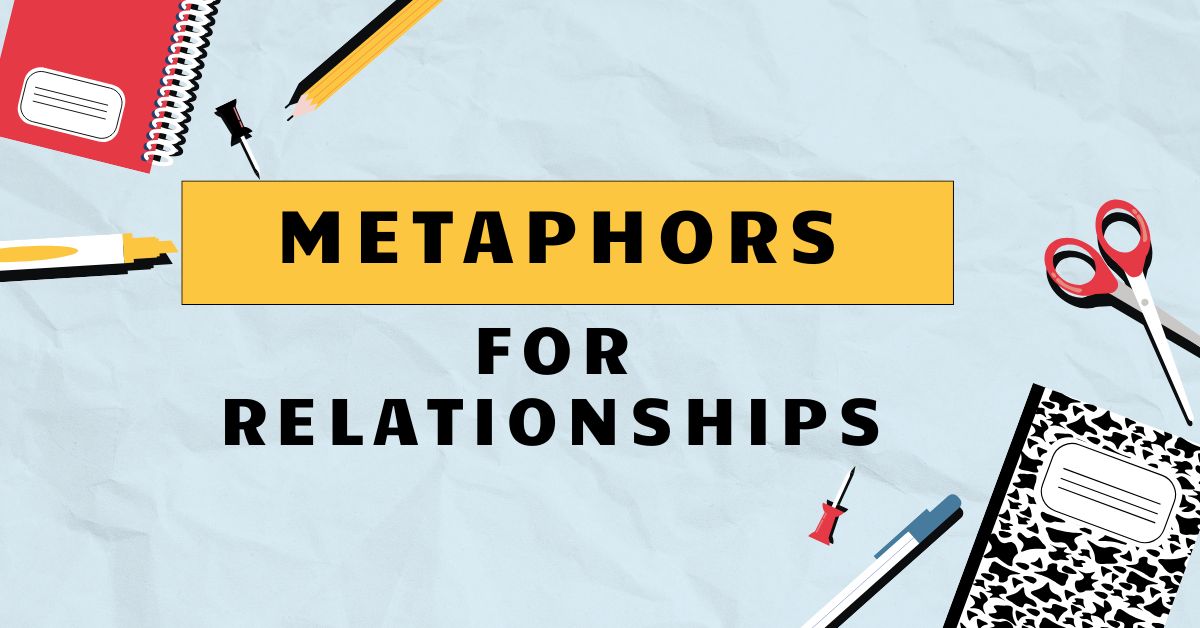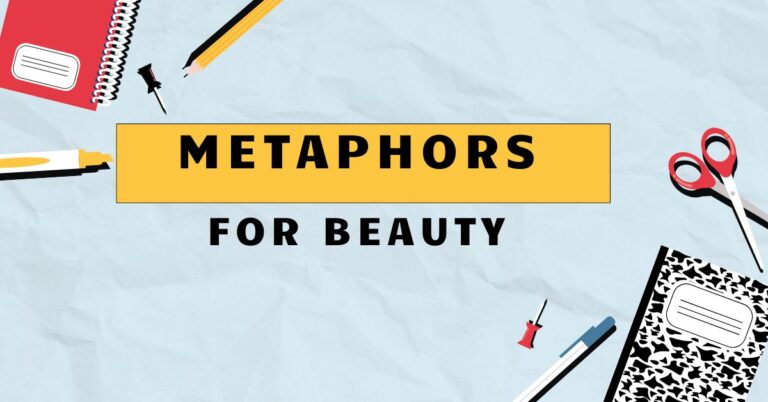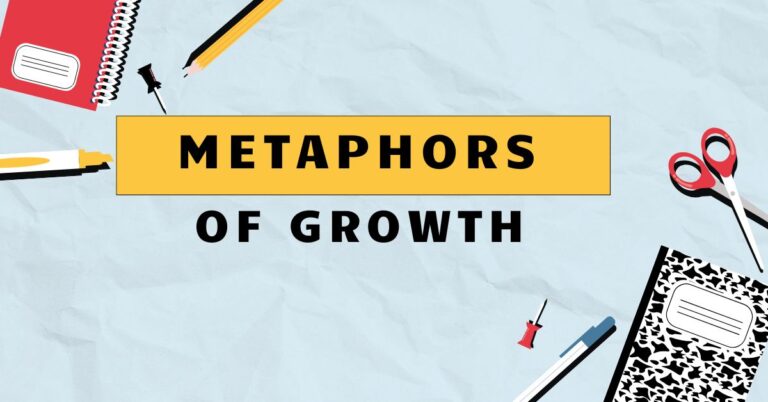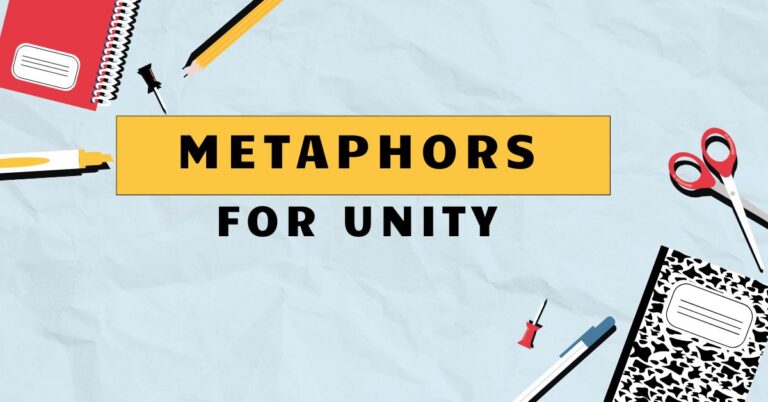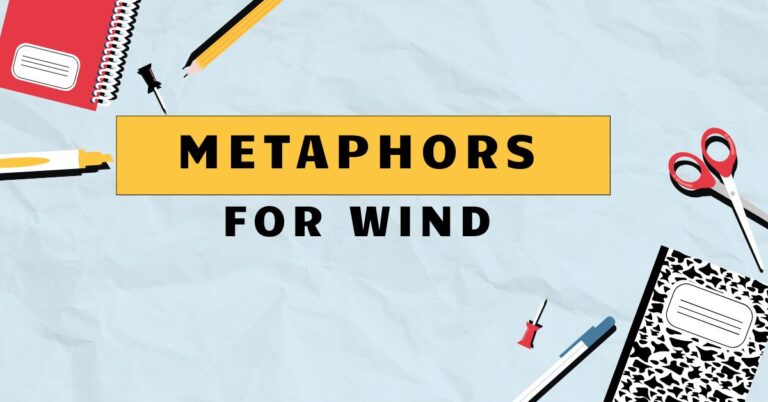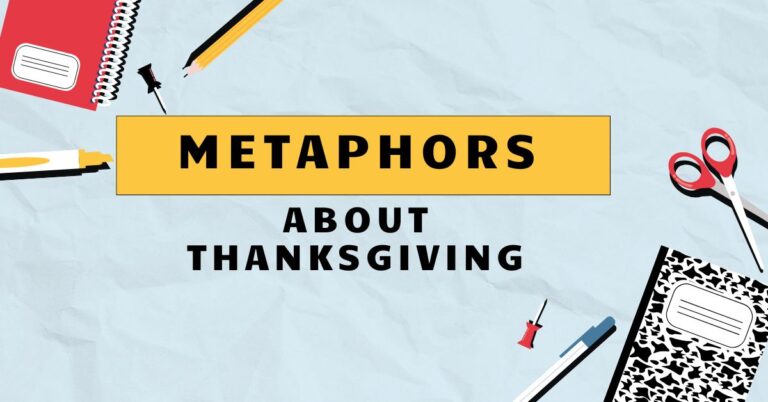45 Metaphors for Relationships: Understanding Figurative Language
Metaphors are a powerful tool in the English language, allowing us to understand and express complex ideas by comparing them to more familiar concepts. When it comes to relationships, metaphors provide a rich and nuanced way to describe the dynamics, challenges, and joys of human connection.
Mastering the use and interpretation of relationship metaphors enhances both your comprehension and expression in English. This article is designed for English language learners, writers, and anyone interested in deepening their understanding of figurative language.
It serves as a comprehensive guide to identifying, interpreting, and using metaphors effectively in the context of relationships.
Table of Contents
- Definition of Metaphor and Its Role in Describing Relationships
- Structural Breakdown of Relationship Metaphors
- Types and Categories of Relationship Metaphors
- Examples of Relationship Metaphors
- Usage Rules for Relationship Metaphors
- Common Mistakes When Using Relationship Metaphors
- Practice Exercises
- Advanced Topics in Relationship Metaphors
- Frequently Asked Questions
- Conclusion
Definition of Metaphor and Its Role in Describing Relationships
Ametaphoris a figure of speech that directly compares two unrelated things, asserting that they are the same or similar in some way. Unlike similes, which use words like “like” or “as” to make comparisons, metaphors state the comparison directly.
The power of a metaphor lies in its ability to transfer qualities from one concept to another, creating new understanding and emotional resonance. In the context of relationships, metaphors help us articulate the intangible aspects of human connection, such as love, commitment, conflict, and growth.
They provide a vivid and relatable way to describe the complex dynamics that exist between people.
The function of metaphors in describing relationships is multifaceted. Firstly, they allow us toconceptualize abstract ideas.
Love, for example, is a complex emotion that can be difficult to define. By using metaphors, we can compare love to something more concrete, like a flame, a garden, or a journey, making it easier to grasp its various facets.
Secondly, metaphorsadd emotional depthto our descriptions. They can evoke feelings of warmth, excitement, danger, or stability, depending on the specific metaphor used.
Finally, metaphorsenhance communicationby creating a shared understanding between individuals. When we use a metaphor that resonates with our audience, we can convey our thoughts and feelings more effectively.
Structural Breakdown of Relationship Metaphors
Relationship metaphors, like all metaphors, consist of two key elements: thetenorand thevehicle. The tenor is the subject being described (in this case, the relationship), and the vehicle is the object or concept to which the subject is being compared.
Understanding this structure is crucial for both interpreting and creating effective relationship metaphors.
Let’s consider the metaphor “Our relationship is a rollercoaster.” Here, the tenor is “our relationship,” and the vehicle is “a rollercoaster.” The metaphor suggests that the relationship, like a rollercoaster, is characterized by ups and downs, excitement, and potential danger. The shared characteristics between the tenor and the vehicle are what make the metaphor meaningful.
The effectiveness of a metaphor depends on therelevance and clarityof the connection between the tenor and the vehicle. A strong metaphor will highlight specific aspects of the relationship that are effectively captured by the vehicle.
For instance, the “rollercoaster” metaphor works because it accurately reflects the unpredictable and emotional nature of some relationships. However, if the vehicle is too obscure or unrelated to the tenor, the metaphor may be confusing or ineffective.
Types and Categories of Relationship Metaphors
Relationship metaphors can be categorized based on the type of vehicle used. Each category offers a different perspective on the nature of relationships and highlights specific aspects of their dynamics.
Journey Metaphors
Journey metaphors are among the most common and versatile types of relationship metaphors. They compare a relationship to a journey, emphasizing the idea of progress, obstacles, and shared experiences.
These metaphors often focus on the direction, challenges, and rewards of the relationship.
Examples of journey metaphors include: “We’re on the same path,” “Our relationship is a long and winding road,” “We’ve hit a roadblock,” and “We’re navigating rough waters.” These metaphors evoke a sense of movement, direction, and the need for collaboration and resilience.
Container Metaphors
Container metaphors describe relationships as containers, highlighting the idea of boundaries, inclusion, and exclusion. These metaphors often focus on the emotional space within the relationship and how it is shared between partners.
Examples of container metaphors include: “We’re in a close relationship,” “There’s a lot of space between us,” “She’s shutting me out,” and “He’s opening up to me.” These metaphors emphasize the importance of emotional intimacy, boundaries, and communication in maintaining a healthy relationship.
War Metaphors
War metaphors portray relationships as battles or conflicts, emphasizing the idea of competition, aggression, and defense. While these metaphors can be negative, they can also highlight the need for strength, resilience, and strategic thinking in overcoming challenges.
Examples of war metaphors include: “We’re fighting all the time,” “He’s always on the attack,” “She’s building up her defenses,” and “We’re at war with each other.” These metaphors evoke a sense of tension, conflict, and the potential for damage and destruction.
Natural Element Metaphors
Natural element metaphors compare relationships to elements of nature, such as fire, water, earth, and air. These metaphors often focus on the fundamental forces that shape the relationship, such as passion, stability, or freedom.
Examples of natural element metaphors include: “Our love is like a fire,” “She’s my anchor,” “He’s my breath of fresh air,” and “We’re as solid as a rock.” These metaphors evoke a sense of natural beauty, power, and the interconnectedness of the relationship with the world around it.
Building Metaphors
Building metaphors describe relationships as structures that are built and maintained over time. These metaphors emphasize the importance of strong foundations, careful planning, and ongoing effort in creating a lasting relationship.
Examples of building metaphors include: “We’re building a strong relationship,” “Our relationship is crumbling,” “He’s laying the groundwork for a future together,” and “She’s the foundation of our family.” These metaphors evoke a sense of progress, stability, and the potential for growth and expansion.
Economic Metaphors
Economic metaphors portray relationships in terms of investment, profit, and loss. These metaphors often focus on the exchange of resources, such as time, energy, and emotions, within the relationship.
Examples of economic metaphors include: “I’m investing in this relationship,” “We’re getting a lot out of this relationship,” “She’s draining me emotionally,” and “He’s a valuable asset.” These metaphors evoke a sense of value, exchange, and the need for balance and fairness in the relationship.
Examples of Relationship Metaphors
Understanding the different types of relationship metaphors is essential, but seeing them in action is even more helpful. The following tables provide a variety of examples, categorized by the type of metaphor they represent.
Each example is designed to illustrate how these metaphors can be used to describe different aspects of relationships.
The table below showcases examples of Journey Metaphors. These metaphors often describe the progress, challenges, and direction of a relationship, using the imagery of travel and exploration.
| Metaphor | Interpretation |
|---|---|
| Our relationship is a rollercoaster. | The relationship has many ups and downs, with moments of excitement and fear. |
| We’re sailing smoothly. | The relationship is progressing without significant problems. |
| We’ve hit a dead end. | The relationship has reached a point where it cannot progress further. |
| We’re on the right track. | The relationship is moving in a positive direction. |
| We’re lost at sea. | The relationship lacks direction and clarity. |
| We’re climbing a mountain together. | The relationship requires effort and perseverance to overcome challenges. |
| We’re walking on eggshells. | The relationship is fragile and requires careful handling. |
| We’re running in circles. | The relationship is repetitive and unproductive. |
| We’re building bridges. | The relationship is focused on establishing connections and understanding. |
| We’re digging a hole. | The relationship is deteriorating due to negative actions. |
| Our relationship is a marathon, not a sprint. | The relationship requires endurance and long-term commitment. |
| We’re navigating uncharted waters. | The relationship is exploring new and unknown territory. |
| We’re stuck in a rut. | The relationship has become stagnant and boring. |
| We’re paving the way for a bright future. | The relationship is creating opportunities for future success. |
| We’re on a collision course. | The relationship is heading towards conflict and potential disaster. |
| Our relationship is a scenic route. | The relationship is enjoyable and full of beautiful moments. |
| We’re at a crossroads. | The relationship requires making important decisions. |
| We’re making good progress. | The relationship is advancing positively. |
| We’re going our separate ways. | The relationship is ending, and the individuals are diverging. |
| We’re drifting apart. | The relationship is weakening, and the individuals are growing distant. |
| We’re back on track. | The relationship has recovered from a setback and is progressing again. |
| We’re going downhill. | The relationship is deteriorating. |
| The road ahead is clear. | The future of the relationship is promising and unobstructed. |
| We’re taking the high road. | The relationship is prioritizing ethical and mature behavior. |
| We’re on a slippery slope. | The relationship is in a precarious situation that could easily worsen. |
The table below presents examples of Container Metaphors. These metaphors often describe the emotional space and boundaries within a relationship, focusing on feelings of closeness, distance, and emotional containment.
| Metaphor | Interpretation |
|---|---|
| We’re in a bubble. | The relationship is isolated from the outside world. |
| She’s bottling up her feelings. | She’s suppressing her emotions and not expressing them openly. |
| He’s opening up to me. | He’s sharing his thoughts and feelings with me. |
| I feel trapped in this relationship. | I feel confined and restricted by the relationship. |
| We’re building walls. | We’re creating emotional barriers between each other. |
| There’s a void between us. | There’s a lack of emotional connection and intimacy. |
| I feel suffocated in this relationship. | I feel overwhelmed and controlled by the relationship. |
| We’re on the same wavelength. | We understand each other and share similar thoughts and feelings. |
| We’re in sync. | We’re harmonious and well-coordinated in our actions and feelings. |
| We’re out of touch. | We’ve lost connection and understanding with each other. |
| She keeps me at arm’s length. | She maintains emotional distance and avoids intimacy. |
| He’s building a fortress around his heart. | He’s protecting himself from emotional vulnerability. |
| We’re living in separate worlds. | We have different interests and perspectives, leading to disconnection. |
| She’s wearing her heart on her sleeve. | She openly expresses her emotions. |
| He’s a closed book. | He’s secretive and difficult to understand. |
| We’re on different pages. | We have conflicting views and expectations. |
| We’re in a good place. | The relationship is in a positive and stable state. |
| I feel lost in this relationship. | I feel confused and uncertain about my role and purpose. |
| We’re in a rut. | The relationship has become stagnant and boring. |
| I feel like I’m walking on thin ice. | I feel like I need to be very careful to avoid causing problems. |
| We’re in deep water. | The relationship is facing serious challenges and difficulties. |
| We’re in a tight spot. | The relationship is in a difficult situation with limited options. |
| We’re in a whirlwind romance. | The relationship is intense, fast-paced, and exciting. |
| We’re in a holding pattern. | The relationship is temporarily stalled and waiting for resolution. |
| We’re in uncharted territory. | The relationship is exploring new and unknown aspects. |
The table below provides examples of War Metaphors. These metaphors often describe conflict, competition, and defense mechanisms within a relationship, highlighting the struggles and battles that can occur.
| Metaphor | Interpretation |
|---|---|
| We’re always fighting. | The relationship is characterized by frequent arguments and disagreements. |
| He’s attacking my character. | He’s criticizing and undermining my personal qualities. |
| She’s building up her defenses. | She’s protecting herself from emotional vulnerability and potential harm. |
| We’re at war with each other. | The relationship is marked by intense conflict and hostility. |
| I feel like I’m under siege. | I feel constantly attacked and pressured in the relationship. |
| He’s using emotional blackmail. | He’s manipulating my emotions to control my behavior. |
| She’s taking hostages. | She’s using manipulative tactics to gain control or leverage in the relationship. |
| We’re locked in a power struggle. | The relationship is defined by competition for control and dominance. |
| I’m surrendering to his demands. | I’m giving in to his wishes to avoid conflict. |
| She’s planting seeds of doubt. | She’s trying to create uncertainty and mistrust in my mind. |
| He’s waging a campaign against me. | He’s systematically trying to undermine and discredit me. |
| We’re drawing battle lines. | We’re establishing clear boundaries and preparing for conflict. |
| She’s digging her heels in. | She’s refusing to compromise or change her position. |
| He’s taking a stand. | He’s asserting his position and defending his beliefs. |
| We’re engaged in a cold war. | The relationship is characterized by tension and hostility, but without open conflict. |
| She’s firing shots across the bow. | She’s issuing warnings or threats to assert her position. |
| He’s holding his ground. | He’s maintaining his position and resisting pressure. |
| We’re in a stalemate. | The relationship has reached a point where neither party can gain an advantage. |
| She’s playing hardball. | She’s using aggressive tactics to get what she wants. |
| He’s calling a truce. | He’s proposing a temporary cessation of hostilities. |
| We’re negotiating a peace treaty. | We’re working towards a resolution of our conflicts and a return to harmony. |
| She’s retreating from the battlefield. | She’s withdrawing from the conflict and avoiding confrontation. |
| He’s regrouping his forces. | He’s reassessing his strategy and preparing for future conflict. |
| We’re on the defensive. | We’re protecting ourselves from attacks and criticism. |
Usage Rules for Relationship Metaphors
Using relationship metaphors effectively requires careful consideration of several factors. The metaphor should berelevant, clear, and consistentwith the overall tone and message.
Avoid mixing metaphors or using metaphors that are too obscure or confusing.
Maintain consistencyin your use of metaphors. If you start describing a relationship as a journey, stick with related imagery throughout your description.
Avoid abruptly switching to a different type of metaphor, as this can create confusion and weaken the impact of your message.
Be mindful of the connotationsof your chosen metaphors. War metaphors, for example, can be highly negative and should be used with caution.
Consider the emotional impact of your metaphors and choose those that best convey the intended meaning and tone.
Common Mistakes When Using Relationship Metaphors
One common mistake is mixing metaphors, which occurs when you combine two or more unrelated metaphors in a way that creates a nonsensical or contradictory image. For example, saying “Our relationship is a rollercoaster that’s also a sinking ship” is a mixed metaphor because it combines two conflicting images.
Another mistake is usingclichéd metaphors, which are overused and lack originality. Phrases like “Our love is a battlefield” or “We’re two peas in a pod” have lost their impact due to overuse.
Strive to create fresh and original metaphors that capture the unique aspects of the relationship you are describing.
Incorrect:Our relationship is a rollercoaster that’s a sinking ship. (Mixed metaphor)Correct:Our relationship is a rollercoaster.
(Consistent metaphor)
Incorrect:We’re two peas in a pod. (Clichéd metaphor)Correct:We’re like two branches growing from the same tree, intertwined and inseparable.
(Original metaphor)
Practice Exercises
Test your understanding of relationship metaphors with the following exercises. Identify the type of metaphor used in each sentence and explain its meaning.
Exercise 1: Identifying Metaphor Types
| Question | Answer |
|---|---|
| 1. Our relationship is a garden that needs constant tending. | Building Metaphor: The relationship requires ongoing care and attention to thrive. |
| 2. We’re navigating rough seas in our marriage. | Journey Metaphor: The marriage is facing challenges and difficulties. |
| 3. She’s building walls around her heart. | Container Metaphor: She’s protecting herself from emotional vulnerability. |
| 4. He’s always on the attack in our conversations. | War Metaphor: He’s aggressive and confrontational in his communication. |
| 5. Our love is a burning flame. | Natural Element Metaphor: The love is passionate and intense. |
| 6. I’m investing a lot of time and energy into this friendship. | Economic Metaphor: The friendship requires a significant commitment of resources. |
| 7. We’re on the same page when it comes to parenting. | Container Metaphor: We share the same understanding and expectations. |
| 8. Our relationship is a marathon, not a sprint. | Journey Metaphor: The relationship requires endurance and long-term commitment. |
| 9. He’s my rock in times of trouble. | Natural Element Metaphor: He provides stability and support. |
| 10. We’re locked in a power struggle. | War Metaphor: The relationship is defined by competition for control. |
Exercise 2: Creating Your Own Metaphors
Create your own relationship metaphors for the following scenarios:
- A relationship that is strong and resilient.
- A relationship that is fragile and easily broken.
- A relationship that is full of passion and excitement.
- A relationship that is stable and secure.
- A relationship that is facing challenges and difficulties.
- A relationship characterized by constant arguments.
- A relationship where one person feels trapped.
- A relationship that is growing stronger.
- A relationship that lacks communication.
- A relationship where both partners support each other.
Possible Answers:
- A fortress, an oak tree.
- A house of cards, a butterfly’s wing.
- A wildfire, a shooting star.
- A sturdy bridge, a calm harbor.
- A stormy sea, a rocky climb.
- A boxing match, a tug-of-war.
- A cage, a sinking ship.
- A vine climbing a wall, a tree growing taller.
- A silent movie, a closed book.
- Two pillars supporting a roof, two hands clasped together.
Advanced Topics in Relationship Metaphors
For advanced learners, exploring the cultural and historical context of relationship metaphors can provide deeper insights. Different cultures may use different metaphors to describe relationships, reflecting their unique values and beliefs.
For example, some cultures may emphasize the importance of family and community in relationships, while others may focus on individual autonomy and personal fulfillment.
Analyzing the use of relationship metaphors in literature and film can also enhance your understanding of their power and complexity. Authors and filmmakers often use metaphors to create vivid and memorable portrayals of relationships, exploring themes of love, loss, betrayal, and redemption.
Frequently Asked Questions
- What is the difference between a metaphor and a simile?
A metaphor directly compares two things without using “like” or “as,” while a simile uses “like” or “as” to make the comparison. For example, “Our relationship is a rollercoaster” is a metaphor, while “Our relationship is like a rollercoaster” is a simile. - Why are metaphors important in describing relationships?
Metaphors allow us to express complex and abstract aspects of relationships in a vivid and relatable way, adding emotional depth and enhancing communication. - What are some common categories of relationship metaphors?
Common categories include journey metaphors, container metaphors, war metaphors, natural element metaphors, building metaphors, and economic metaphors. - How can I avoid mixing metaphors?
Be mindful of the imagery you are using and ensure that the metaphors you combine are consistent and coherent. Avoid combining unrelated or contradictory images. - What should I do if I don’t understand a relationship metaphor?
Consider the context in which the metaphor is used and try to identify the shared characteristics between the tenor and the vehicle. If necessary, ask for clarification. - Are some relationship metaphors more appropriate than others?
Yes, the appropriateness of a metaphor depends on the specific context and the intended message. Be mindful of the connotations of your chosen metaphors and avoid those that could be offensive or misleading. - How can I create original relationship metaphors?
Strive to think beyond clichés and explore unique aspects of the relationship you are describing. Consider the specific qualities, challenges, and dynamics that make the relationship unique. - Can metaphors change over time?
Yes, the meaning and relevance of metaphors can evolve over time as cultural norms and values change. Some metaphors may become outdated or lose their impact, while others may gain new meanings. - How do cultural differences affect the interpretation of relationship metaphors?
Different cultures may have different perspectives on relationships, which can influence how metaphors are interpreted. Understanding the cultural context is essential for accurate interpretation. - What is the role of context in understanding relationship metaphors?
Context is crucial for understanding the intended meaning of a relationship metaphor. The surrounding words, phrases, and overall situation can provide valuable clues about the metaphor’s significance.
Conclusion
Understanding and using metaphors for relationships enhances your ability to express complex emotions and dynamics in English. By recognizing the different types of metaphors, such as journey, container, and war metaphors, you can better interpret and create vivid descriptions of human connections.
Avoiding common mistakes like mixing metaphors and using clichés will improve your communication skills.
Continue practicing by identifying metaphors in everyday conversations, literature, and media. Experiment with creating your own metaphors to describe relationships in unique and meaningful ways.
With consistent effort, you can master the art of using relationship metaphors to enrich your language and deepen your understanding of human connections. Remember to consider the context, audience, and intended message when choosing and using metaphors to ensure clarity and impact.

